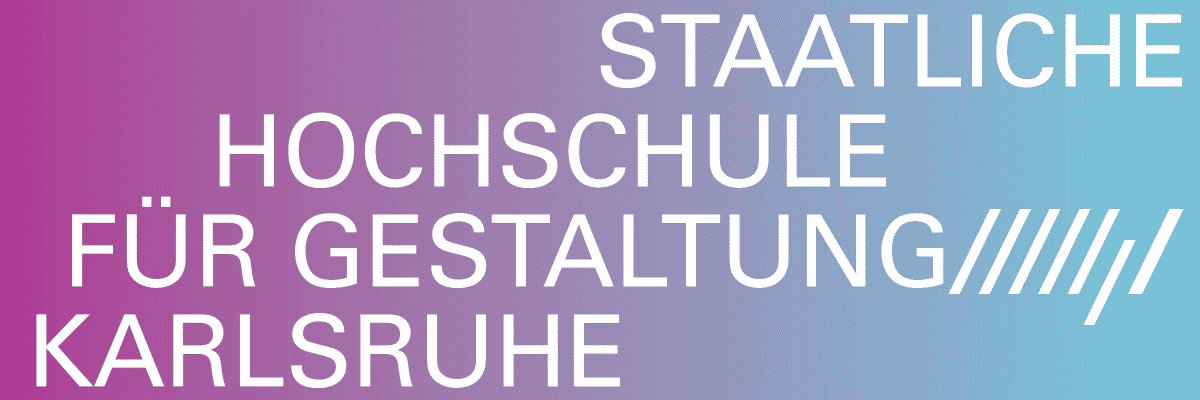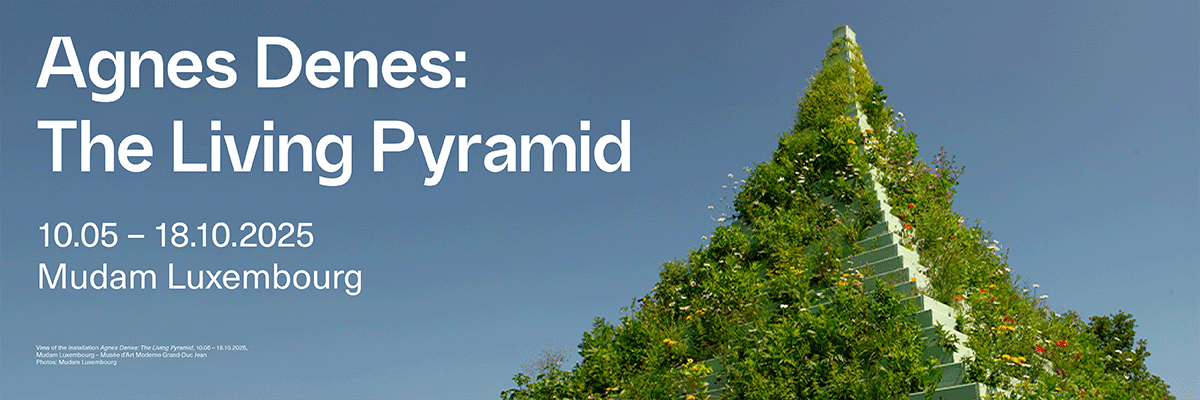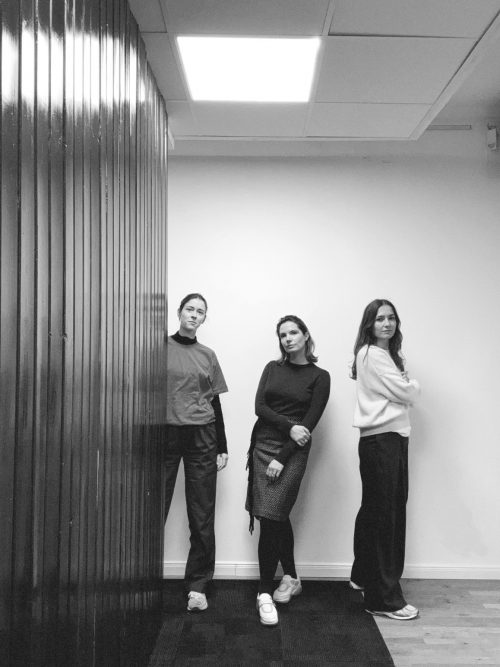
019, David Bernstein, Christiane Blattmann, Alessio Capone, Jonas Dehnen, Nico Dockx, Lise Duclaux, Jakub Jansa, Monika Kazi, Jiyoung Kim, Metahaven, Mathias Mu, Yemo Park, Paola Renard, Leander Schönweger, Hussein Shikha, Pei-Hsuan Wang, Guy Woueté
Publiek Park
Project Info
- 💙 Harmoniepark, Albertpark and Provincietuin, Antwerp
- 💚 Jef Declercq, Anna Laganovska, Koi Persyn & Adriënne van der Werf
- 🖤 019, David Bernstein, Christiane Blattmann, Alessio Capone, Jonas Dehnen, Nico Dockx, Lise Duclaux, Jakub Jansa, Monika Kazi, Jiyoung Kim, Metahaven, Mathias Mu, Yemo Park, Paola Renard, Leander Schönweger, Hussein Shikha, Pei-Hsuan Wang, Guy Woueté
- 💜 Publiek Park
- 💛 Michiel De Cleene & Charley Croonen
Share on

019; WOW19, 2023; bouncy castle; Photography by Michiel De Cleene
Advertisement

David Bernstein; Synagoga & Ecclesia, 2023; epoxy clay and wood; Photography by Michiel De Cleene

David Bernstein; Saunra, 2017; Fiat Multipla, sauna; Photography by Michiel De Cleene

Christiane Blattmann; Terminalia, 2023; zinc rain pipes, textile, resin, wax, pigment, tension belts, rubber; Photography by Michiel De Cleene

Alessio Ragno Capone; Mitosis, 2023; removal of ground; Photography by Michiel De Cleene

Jonas Dehnen; Pterion shelter, oder die dünnste Stelle des Schädels, 2023; wood, aluminum, tin; Photography by Michiel De Cleene and Charley Croonen

Nico Dockx; Every Collection Hides Another Collection, 2020; recuperated wood, steel, art collection of the Province of Antwerp; Photography by Charley Croonen

Jakub Jansa; Opening Ceremony, 2022; video; Photography by Charley Croonen

Monika Emmanuelle Kazi; Do you know how to play?, at Moonstreet, 2022; video; Photography by Charley Croonen

Jiyoung Kim; Rolling Border Pole, 2023; copper, textile, ink; Photography by Charley Croonen

Metahaven; Wrapping worlds, 2023; print on a fruit wrapper; Photography by Charley Croonen

Mathias Mu; Chasing Ephemera, 2023; 3D printed sand, 3D printed resin, aluminum, soil, lion’s mane fungi; Photography by Michiel De Cleene

Yemo Park; Piece of Heart, 2023; cast aluminum, glazed ceramic; Photography by Charley Croonen

Paola Siri Renard; garderobe, 2023; acrylic plaster, fiberglass, shimmering colors, inox; Photography by Michiel De Cleene

Leander Schönweger; Condition IX, 2023; steel; Photography by Michiel De Cleene

Hussein Shikha; Untitled, 2022; video; Photography by Charley Croonen

Jakub Jansa; Opening Ceremony, 2023; banners; Photography by Charley Croonen

Pei-Hsuan Wang; Paradise, 2023; pressure-washed text, excerpted from Octavia E. Butler’s Parable Series (1993-1998); Photography by Michiel De Cleene

Guy Woueté; Words of Diversity, 2023; trolleys, empty tin cans and banners; Photography by Michiel De Cleene

Pei-Hsuan Wang; Five Figs, 2023; banner adopted from the artist’s mother’s pencil drawing on the back of a music sheet; Photography by Michiel De Cleene
Publiek Park is a nomadic, bi-annual contemporary art project, inviting international artists to present and create artworks in public parks and gardens in a site-sensitive manner. Publiek Park is accompanied by a publication - with social, artistic and historical research - and a lively public programme, including music concerts, film screenings, performances, lectures, workshops, and guided tours. The project aims to establish unique collaborations with artists and local organisations within a natural and architectural environment, activating the cultural ecologies of a city.
For its second edition, Publiek Park has landed in Antwerp, inhabiting the Harmonie Park, Koning Albert Park and the Garden of the Provinciehuis (Provincial Government Building) together with 18 artists. Although separated by active traffic and closed-off areas of private property, these parks, like siblings, are deeply bonded, letting us imagine their pasts and futures as parallel tracks. Soon after selecting the locations, we realised that perceiving the three parks as one green space aligns with a vision that persists among the local residents, architects and public servants. Considering the number of cultural initiatives within the area, as well as its enthusiastic local residents and activists, we are convinced of the growing cultural and ecological significance of this area for the city. This place, where the districts of Antwerp and Berchem meet, carries further a potential that has persisted from the 19th century to the present day – of an urban zone that is equally vital for enhancing the lives of city inhabitants as it is for captivating international and local visitors with its cultural charm.
Each of the three parks provides a different angle to public green space, embodying different functions and characters. Harmonie Park, most actively used, serves as both a recreational haven for local families and a passage for individuals travelling to and from the District Hall, the hospital, or the coffee house. Albert Park, on the other hand, is sliced off on each side with roads and even a tram line. It consequently receives less oversight and appears to draw distinct forms of use, catering to different needs. The design and foliage within this park offer chances for seclusion and privacy, especially to those who lack access to such spaces elsewhere. Remnant of the former function of Koning Albert Park as a tree nursery, a cluster of senior trees stands in the middle of it, embraced by a low fence safeguarding their roots, while their branches bow under the weight of the years gone by. The Garden of the Provinciehuis is the youngest of the three green spaces, and its youth echoes in its function and demeanour. The plain grass field that surrounds the eccentric, dynamically twisted building that embodies political authority, is most actively occupied by larger gatherings. Almost always windy, this part of the garden can easily accommodate multiple birthday parties, each equipped with its own Bluetooth music speaker and preferred activity. The other, older part of the garden, provides more shade and shelter from the wind, along with more vegetation. It is said to house bats in a former ice cellar, and in the far corner of the garden, you'll stumble upon an apiary.
As we journey from city to city with Publiek Park, we are presented with the opportunity to engage in a comparative study of urban parks. One of our hypotheses is that public green spaces often conceal and obscure histories, which could potentially involve painful or disquieting chapters. Considering that the concept of public parks gained popularity in Europe only two centuries ago, there is usually an intriguing reason why a given parcel of land in a city remains unbuilt. The Citadelpark in Ghent, where the first edition of Publiek Park took place, was established on the remains of a former military site. The green cluster of Harmonie Park, Koning Albert Park and Garden of the Provinciehuis, once situated beyond the Antwerp city walls, held a historical association with crime, illness and mortality through the former presence of a gallows field and a leprosy care centre. We like to refer to parks as the beautiful, green scars of the city, where the cultivated nature creates a layer similar to the layer of hard tissue that forms atop a healing wound.
Another element we carry along with us into the new edition is the idea that parks inherently serve as spaces of exhibition, with artistic and historical monuments on display, functioning as an archive of the city. As precious side-effects of human desire for nature, culture, remembrance, leisure, freedom and control, urban parks encapsulate both location-specific and universal narratives. As we engage with a park, we envision our exhibition and programme as something that complements and illuminates what is already present, forming a promenade through intricate histories, complex presents and imagined futures.
Publiek Park is made possible by the generous support of the Flemish Government, the City of Antwerp, the District of Antwerp, the Province of Antwerp and the Embassy of the Kingdom of The Netherlands.
Publiek Park




